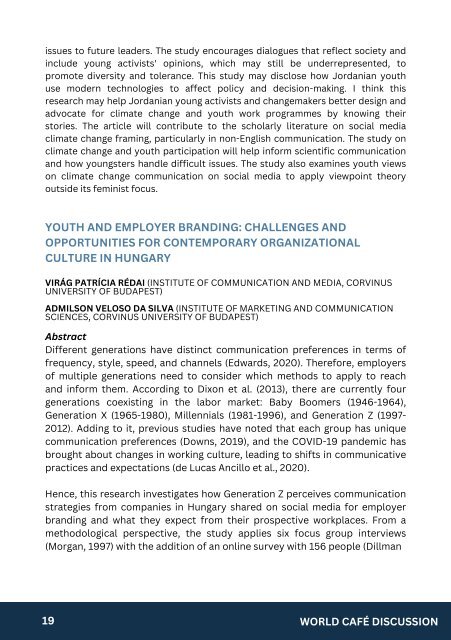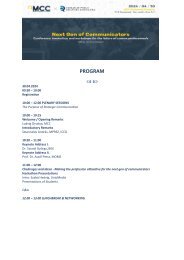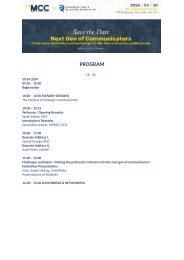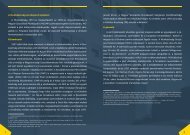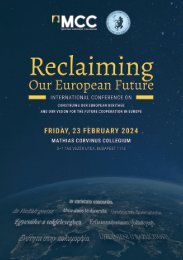Clout Culture - Youth Cultures in Changing Societes Conference
You also want an ePaper? Increase the reach of your titles
YUMPU automatically turns print PDFs into web optimized ePapers that Google loves.
issues to future leaders. The study encourages dialogues that reflect society and<br />
<strong>in</strong>clude young activists' op<strong>in</strong>ions, which may still be underrepresented, to<br />
promote diversity and tolerance. This study may disclose how Jordanian youth<br />
use modern technologies to affect policy and decision-mak<strong>in</strong>g. I th<strong>in</strong>k this<br />
research may help Jordanian young activists and changemakers better design and<br />
advocate for climate change and youth work programmes by know<strong>in</strong>g their<br />
stories. The article will contribute to the scholarly literature on social media<br />
climate change fram<strong>in</strong>g, particularly <strong>in</strong> non-English communication. The study on<br />
climate change and youth participation will help <strong>in</strong>form scientific communication<br />
and how youngsters handle difficult issues. The study also exam<strong>in</strong>es youth views<br />
on climate change communication on social media to apply viewpo<strong>in</strong>t theory<br />
outside its fem<strong>in</strong>ist focus.<br />
YOUTH AND EMPLOYER BRANDING: CHALLENGES AND<br />
OPPORTUNITIES FOR CONTEMPORARY ORGANIZATIONAL<br />
CULTURE IN HUNGARY<br />
VIRÁG PATRÍCIA RÉDAI (INSTITUTE OF COMMUNICATION AND MEDIA, CORVINUS<br />
UNIVERSITY OF BUDAPEST)<br />
ADMILSON VELOSO DA SILVA (INSTITUTE OF MARKETING AND COMMUNICATION<br />
SCIENCES, CORVINUS UNIVERSITY OF BUDAPEST)<br />
Abstract<br />
Different generations have dist<strong>in</strong>ct communication preferences <strong>in</strong> terms of<br />
frequency, style, speed, and channels (Edwards, 2020). Therefore, employers<br />
of multiple generations need to consider which methods to apply to reach<br />
and <strong>in</strong>form them. Accord<strong>in</strong>g to Dixon et al. (2013), there are currently four<br />
generations coexist<strong>in</strong>g <strong>in</strong> the labor market: Baby Boomers (1946-1964),<br />
Generation X (1965-1980), Millennials (1981-1996), and Generation Z (1997-<br />
2012). Add<strong>in</strong>g to it, previous studies have noted that each group has unique<br />
communication preferences (Downs, 2019), and the COVID-19 pandemic has<br />
brought about changes <strong>in</strong> work<strong>in</strong>g culture, lead<strong>in</strong>g to shifts <strong>in</strong> communicative<br />
practices and expectations (de Lucas Ancillo et al., 2020).<br />
Hence, this research <strong>in</strong>vestigates how Generation Z perceives communication<br />
strategies from companies <strong>in</strong> Hungary shared on social media for employer<br />
brand<strong>in</strong>g and what they expect from their prospective workplaces. From a<br />
methodological perspective, the study applies six focus group <strong>in</strong>terviews<br />
(Morgan, 1997) with the addition of an onl<strong>in</strong>e survey with 156 people (Dillman<br />
19<br />
WORLD CAFÉ DISCUSSION


